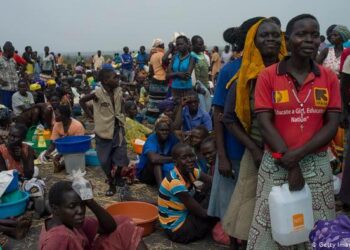In a tumultuous twist, the Uganda Wildlife Education Centre (UWEC) finds itself entangled in a cacophony of dissent as conservationists vehemently oppose its ambitious, yet controversial lion breeding program.
The planned initiative, touted to be a beacon of hope for the dwindling lion population, now stands at the center of a wild storm, with critics asserting that it is a perilous path towards confinement and compromise.
World Animal Protection, the global animal welfare juggernaut hailing from the UK, emerges as the vocal antagonist in this saga, decrying UWEC’s ambitions.
In a scathing rebuke, the charity urges government agencies to redirect their focus, vehemently championing the protection of lions “in their natural habitats rather than breeding them in captivity.”
The Parliamentary Committee on Trade and Tourism’s recent endorsement of UWEC’s staggering 10-billion-shilling plea for lion breeding facilities becomes the epicenter of this uproar.
Conservationists fear that if the plan unfolds, it will shackle lions in conditions that deny them freedom, heighten anxiety, and potentially lead to a pitiful quality of life.
MP Mwine Mpaka, the Committee Chairperson, attempts to quell the rising tempest by revealing the blueprint: a cage within a national park.
In a peculiar twist of logic, he asserts that this confinement is necessary to create a conducive environment for breeding, citing losses due to human-wildlife conflicts, electric fences, and poisoning. “We need to bring these lions back to our game parks,” he passionately exclaims.
World Animal Protection, not one to mince words, brands cage lion breeding as a colossal failure, referencing its alleged phase-out in other African countries like South Africa.
The organization vehemently stresses that lions, majestic beings of the wild, belong in their natural habitats, cautioning that the act of breeding and hand-feeding them in cages could unleash a cascade of issues, from stress and health problems to a compromised quality of life.
The fear crescendos as critics predict a Pandora’s box of negative impacts: conflicts between lions and humans, a surge in poaching, and the ominous specter of trafficking, all conspiring to tip the ecological balance into irreversible chaos.
Edith Kabesiime, the fiery campaign manager at World Animal Protection, steps into the fray, urging UWEC to embrace conservation practices prioritizing animal welfare and the preservation of their natural habitat.
She demands a strategic shift, directing government efforts towards comprehensive wildlife protection strategies that tackle the root causes of the decline in lion populations.
Mwine Mpaka, undeterred by the mounting opposition, reveals the government’s motivation – a drop in lion population from 460 in 2022 to a disheartening 310. If Parliament greenlights the request, the grand plan envisions releasing 15 lions into the wild annually, a spectacle that remains shrouded in uncertainty.
In a bid for compromise, the organization extends an olive branch, inviting the government for a constructive dialogue to explore alternative approaches aligned with international best practices.
A commitment is declared, vowing to “work collaboratively with governments, organizations, and communities across Africa to find humane and effective solutions for wildlife protection.”
As the lion saga intensifies, the question looms: Can this ambitious breeding program strike a harmonious chord between conservation and captivity, or is it destined to be a roaring debacle that echoes through the corridors of wildlife history?
Only time will unravel the fate of Uganda’s lions, caught in the tumultuous clash between preservation and procreation.
Do you have a story in your community or an opinion to share with us: Email us at editorial@watchdoguganda.com













